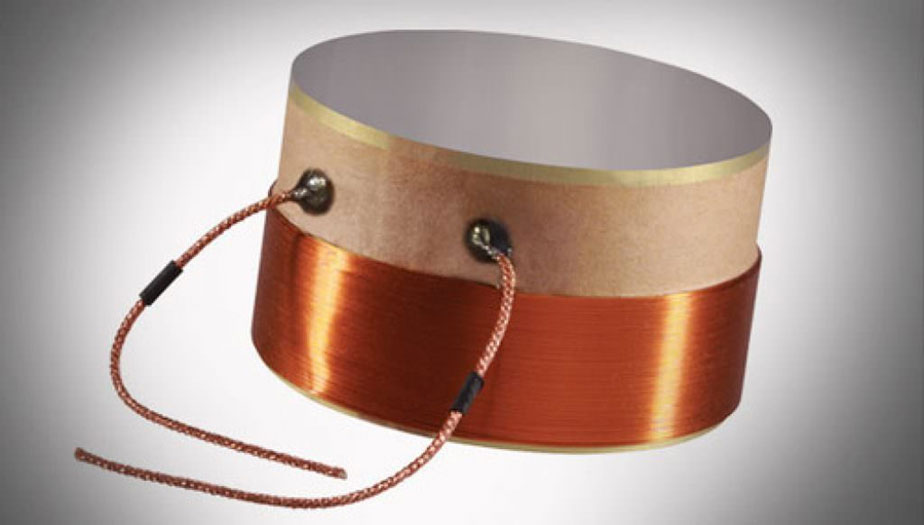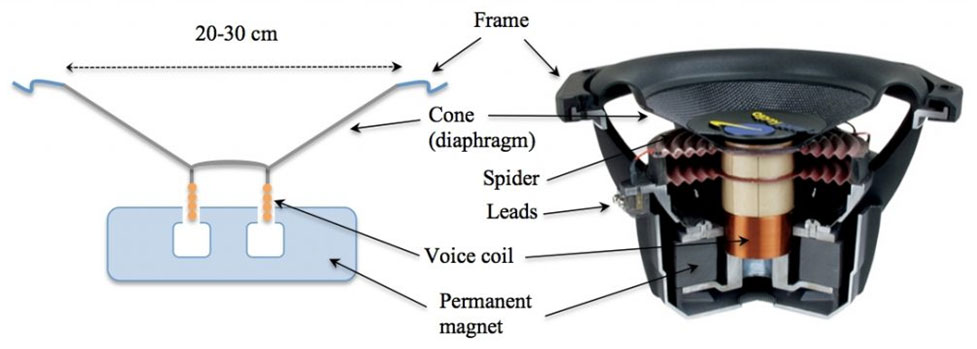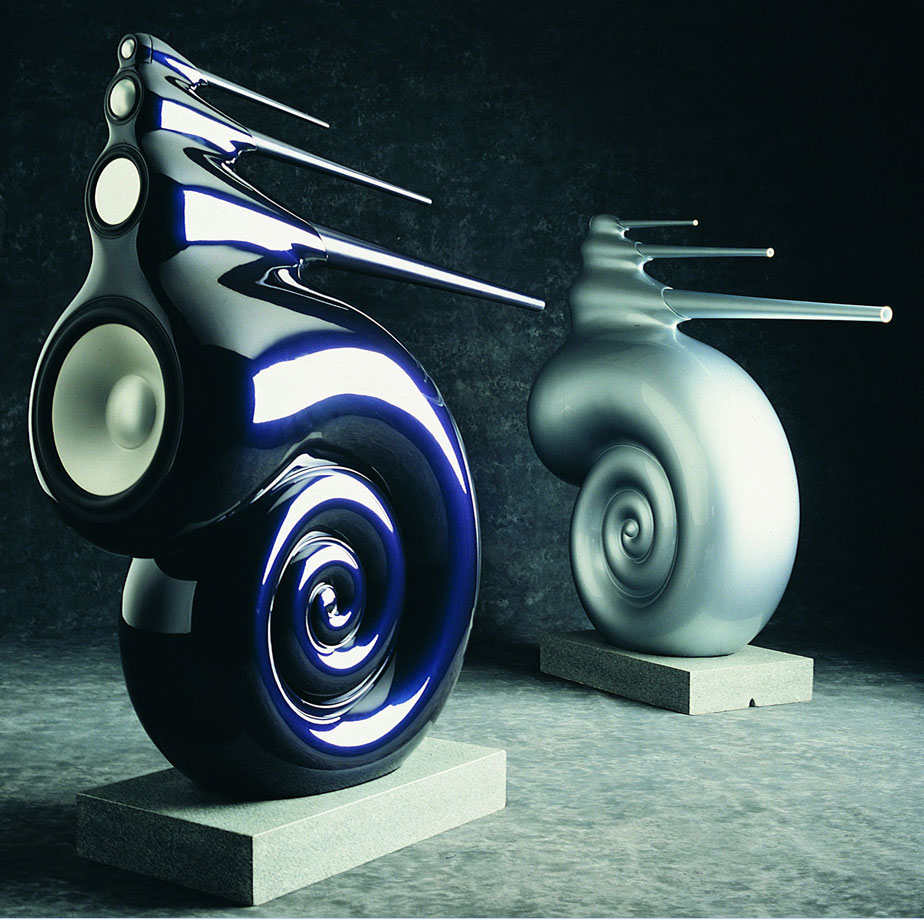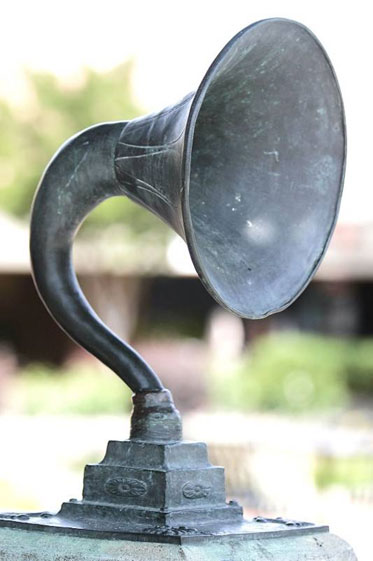This is an article I’ve been wanting to write for some time. I’ve spent the past 51 years working as an audio professional and have witnessed or been directly involved in a great deal of loudspeaker innovation and engineering during that time. I hope you will find this article instructional and entertaining.
What is a Speaker?
So that we are all on the same page, let me define a loudspeaker as any device that converts electrical signal into audible sound. Speakers are also commonly referred to as transducers.
The most common loudspeaker design is the dynamic speaker that does its conversion by the use of a voice coil, which is wire wrapped around a round former that is suspended inside the gap between a pole piece and a magnet. This is referred to as the moving assembly and it attaches to some form of cone material that moves back and forth similar to a piston. It is this motion that moves air and produces sound.
Variants to dynamic speakers include ribbon speakers, electrostatic speakers, and ionic speakers. I will get into those designs later in this article.
I should also comment that experiments have been going on to produce a direct neural stimulator. But since this is a Top-Secret project being developed by the military, perhaps I have already said too much.
Speaker Enclosures
When it comes to dynamic designs, there are numerous approaches to what makes a good speaker system. We have all seen numerous designs, but the most common is a box.
Many speaker systems are typically housed in a speaker enclosure or speaker cabinet, which is often a rectangular or square box made of several forms of wood. There are some designs that use more exotic materials, such as Corian, glass, Lexan, composites of rock and polymer, and sometimes plastic. The enclosure’s materials and design play an important role in the quality of the sound. The enclosure generally must be as stiff and non-resonant as practically possible. Where high fidelity reproduction of sound is required, multiple loudspeaker transducers are often mounted in the same enclosure, each reproducing a different part of the audible frequency range.
Shown is a rather exotic approach to speaker design by Bowers & Wilkins. In this case you see four individual speakers (referred to as “drivers”) with the entire unit comprising a loudspeaker system. Each driver has its own name: tweeters for the highest frequencies; mid-range drivers for middle frequencies (in the fifties they were also called “squawkers”); and woofers for the low frequencies. Extremely low frequencies (16 Hz-~50 Hz) are sometimes handed off to drivers called subwoofers.
In electronics such as TVs, computers and portable audio players, smaller speakers are often used and called on to produce all the sound from their assigned electronics (the full range of frequencies). In these applications, they are considered “full-range drivers.”
The sound produced by speakers is determined by the frequency and amplitude of the sound reproduced. Frequency is the range of how high or low the pitch of the sound. For example, the sound produced by small bells produces high frequency sound, while the pedal notes of an organ generates sounds in the low frequency range.A speaker’s ability to accurately reproduce the full range of music is a good indicator of how accurate the audio will be. Looking at the example of the B&W Nautilus above, you can see multiple speaker cone materials and sizes for different frequency ranges, which helps produce more accurate sounds for each range. Two-way speakers typically have a tweeter and a mid/woofer, while three-way speakers have a tweeter, mid-range, and woofer.
For stereo speakers typically come in pairs, which allows them to produce a sound stage with the intension of recreating the illusion of the original performance. I have often said that surround sound is easy, and stereo is hard. By this I mean that multiple drivers create a surrounding effect that is a very immersive experience. But to produce a three-dimensional sound stage with instruments spread across the room while creating a feeling of depth and height with only a single pair of speakers is very demanding on the system and far more difficult to attain. When done well, the experience displays how good a speaker system truly is.
I have always believed by using just two speakers, music sounds much more natural.
Speakers are one of the most common output device used with everything from home entertainment systems to portable radios to computer systems to commercial sound reinforcement. Regardless of their design, the purpose of speakers is to produce sound that can be heard by the listener.
Early development of the Loudspeaker
The first loudspeaker was invented in Germany by Johann Philipp Reis for use in a telephone back in 1861, but this first design only produced acoustic tones and barely discernible speech. In 1876, Alexander Graham Bell was issued a patent, based on Reis’s work, for a speaker that reproduced intelligible sound. This was part of his patent for the telephone.
Werner Von Siemens created an improved design the following year when he developed the concept of an electromagnetic coil-driven speaker and improvements on the basic design continue to this day. At that time, however, there was not enough understanding of physics and materials engineering to allow Bell or any other inventor the ability to successfully produce an electrodynamic loudspeaker.
Many inventors and engineers developed electrodynamic loudspeakers, but without amplification they could only create rather poor and distorted sound. There was no way at the time to electrically amplify the signal to create very loud sounds. It took the development of tube amplifiers before modern speaker designs could become viable.
In 1898 Oliver Lodge produced a dynamic (moving coil) loudspeaker, but the first practical design came from Danish inventors Peter Jensen and Edwin Pridham in 1915. Interestingly they were living in Napa California at the time. The team was never issued a patent and additionally were unsuccessful in their attempts to sell their designs to telephone companies. Fortunately for us, they founded Magnavox and focused on producing radios.
Inventors Chester Rice and Edward W. Kellogg were issued a patent in 1924 for the direct radiator speaker, what is the moving coil design that has become the most widely accepted design for loudspeakers in use today.
Interestingly, at about this same time, Walter Schottky, together with Dr. Erwin Gerlach, invented the first ribbon loudspeaker.
Unlike modern ribbon designs, the first ribbon loudspeakers had to use electromagnets due to the very poor quality of the large permanent magnetic material of the day.
An electromagnet used AC power to produce a stable magnetic field that the ribbon coil would reside. The regrettable side effect of this early design was that the electromagnet produced prodigious amounts of hum along with the sound.
It was Jensen who produced the first practical fixed magnet dynamic speaker design, but cost prevented its widespread adoption until World War II when the Alnico magnets many audiophiles still covet today came into use.
C.W. Rice of General Electric and E.W. Kellogg of AT&T worked together to develop the modern speaker and first electrically amplified audio system. They created a working prototype in 1921.
Rice and Kellogg solved the final problems, which led to sound that could eventually be called High Fidelity. Their designs had acceptable frequency range and played loud enough to be considered superior to the mechanical horns of the day. They were issued patents in 1925 and produced the first commercial product, called the Radiola Loudspeaker #10, under the company name of RCA.
- (Page 1 of 3)
- Next page →







Very comprehensive and complicated for this non-techie! Two Questions: Is there any relationship between the development of speaker technology and development of hearing aids? Did you write this while on the high seas?
Your eldest cousin